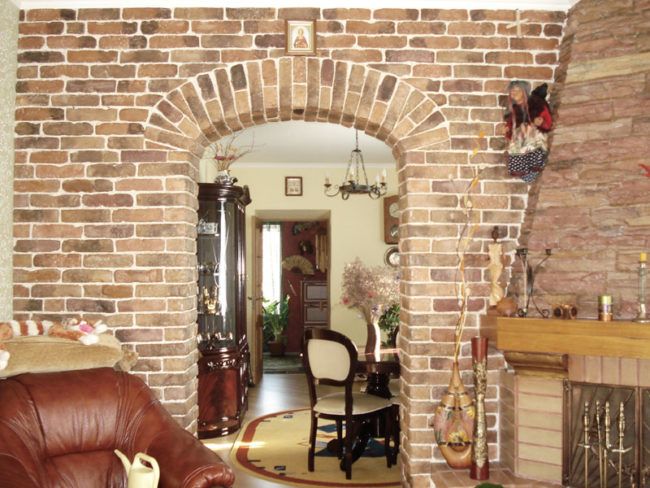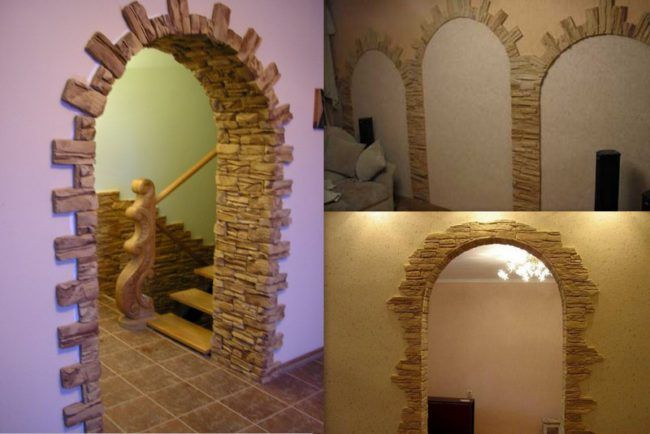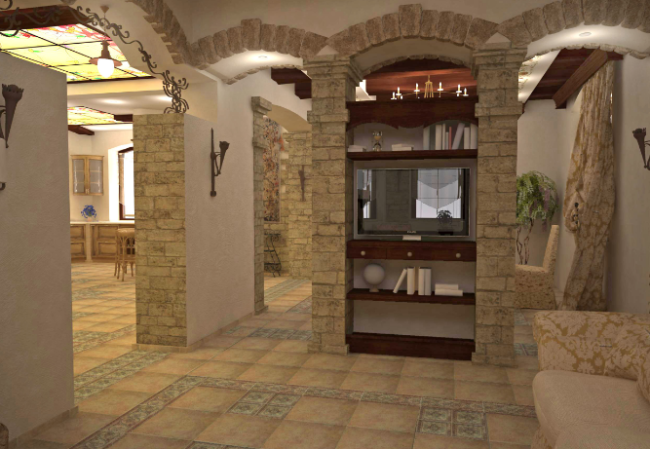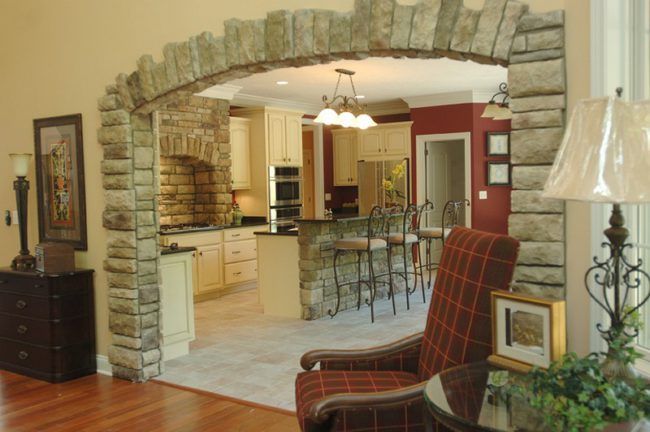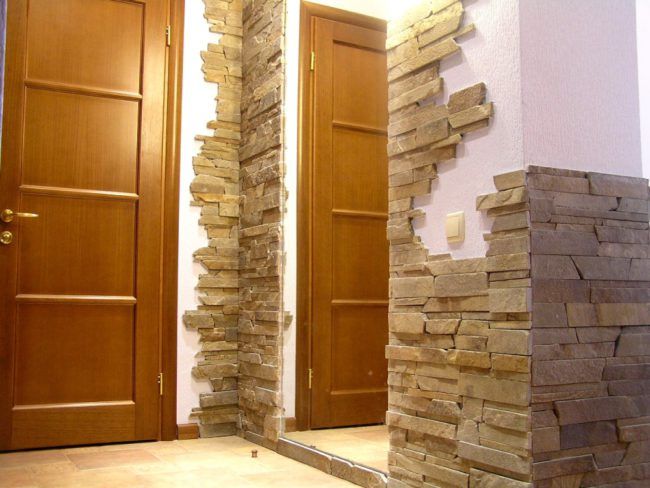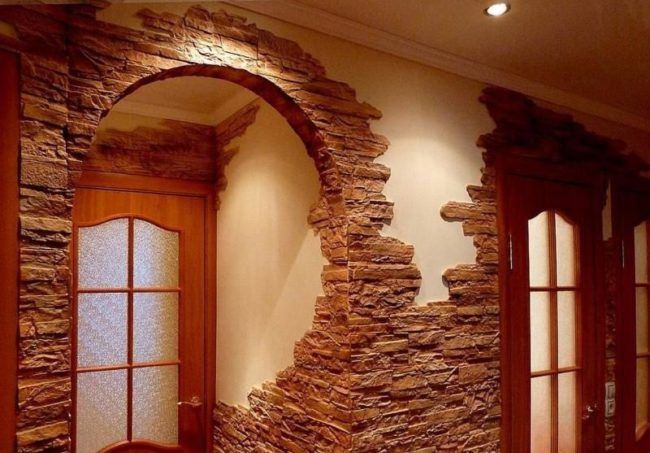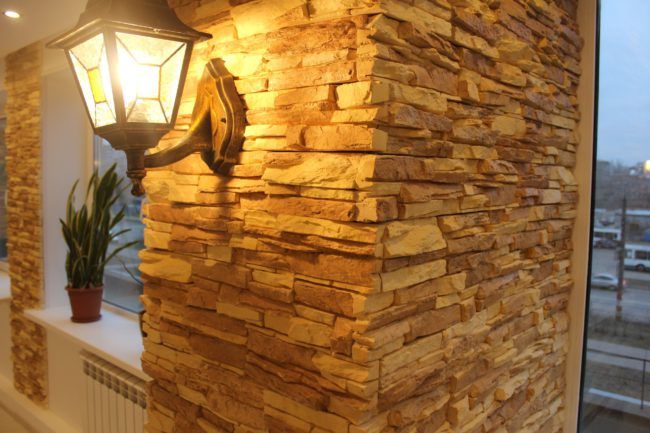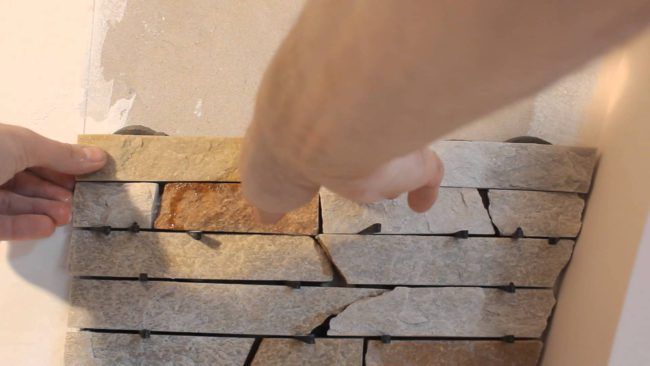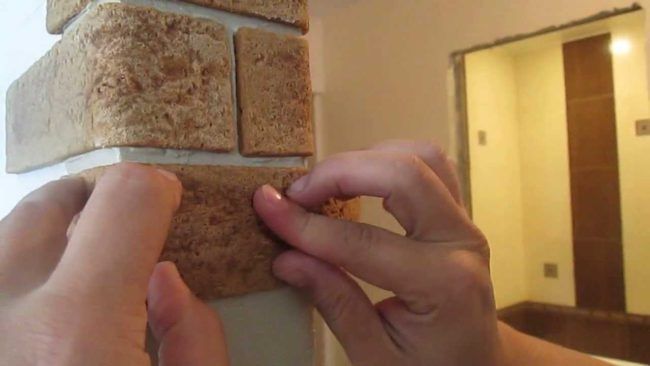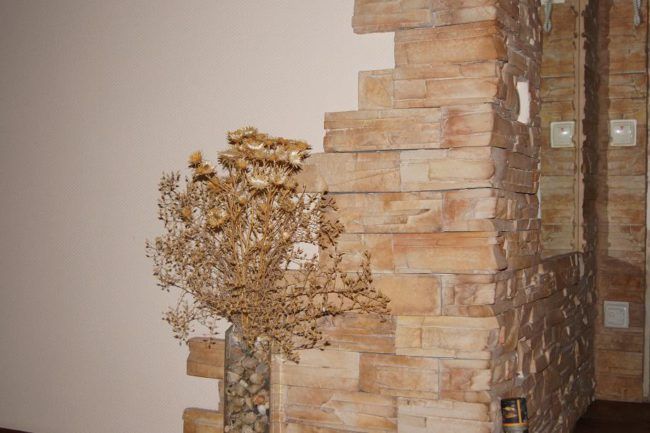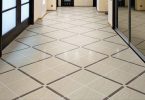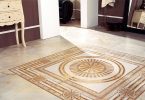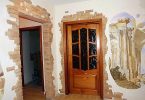The decoration of arched structures with stone is becoming more and more popular. This design solution allows you to give the room a special style, as well as greatly facilitate the cleaning procedure behind doorways, which are most exposed to quick dirt. Decorative stone does not require special care, is reliable and durable in operation, is not susceptible to various fungi, corrosion and is absolutely harmless to the health of residents. Almost everyone will be able to carry out all the work on decorating the arch with stone. To do this, you need to know the rules for selecting material and styling features..
Content
- How to choose a decorative stone for arch decoration
- Choice of facing stone by color
- The correct choice of adhesive
- Rules and secrets for laying facing stone from specialists
The arch can change the room beyond recognition, add grace and attractiveness to it
How to choose a decorative stone for arch decoration
Decorative stone manufacturers have taken care of a large selection of their products. The finishing material has a wide variety of textures and colors. The most popular material is considered: imitation of shell rock, granite, slate, marble and travertine, but the texture can be chosen smooth or resembling a rough and rough stone.
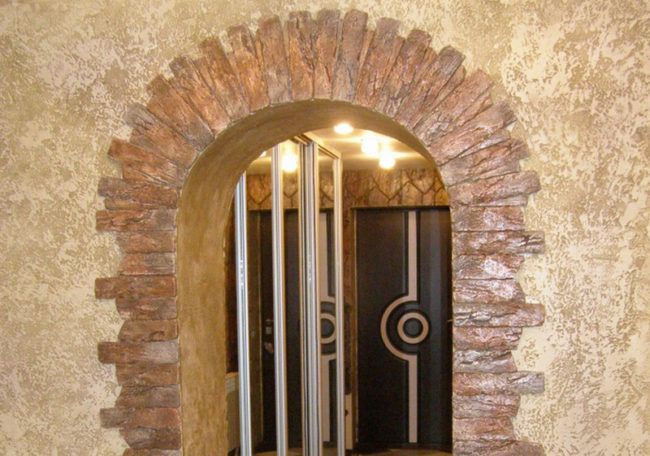
With the help of an arch, you can visually enlarge the space of your room
If the arch will be finished on the facade of the building, it is preferable to opt for a natural material that better retains its protective properties. For decorating an arch indoors, the protective properties of the material are not so significant. The main selection criteria are the appearance and basis of the facing material..
Regardless of what type and shape of the arch, it can decorate any interior
The base of the facing stone can be made of quartzite or acrylic, which are lightweight materials and are better suited for decorating an arch. Such materials are lighter and will hold more reliably on plumb lines. But if the arch foundation is strong, you can opt for finishing tiles with a gypsum, alabaster or sand-cement base. For example:
1. Flexible and lightweight acrylic material is best suited for drywall construction. It will not damage or deform the structure and will easily fix on its surface. Plaster tiles may also be acceptable.
2. A plastered and bricked arch, decorated with a facing stone, which is made on a cement-sand mortar.
The arch is the architectural element on which the overall design of the room depends.
Tip: In order to achieve better adhesion of the tile to the base, it is advisable to select a finishing material with the same base as the surface on which it will be fixed.
Another secret of a successful choice of facing material is to give preference to narrow-shaped tiles, which are easier to lay on the smooth lines of the arch. And in order to facilitate the work with the corner parts of the structure, you can use the corresponding corner version of the product, which will allow you to arrange the corners without much effort.
Choice of facing stone by color
Decorative stone has a large palette of colors. An ordinary consumer, without any design skills, is hard to choose and settle on one option. Here are a few tips to make your choice easier and help you create a unique room design:
1. If the idea was to create a marine theme, you can take a tile that matches the color of natural sand. Such an arch and the whole room will look like the seabed, and the blue or turquoise ceiling will look like the sea surface. A stone and cold blue will work well. It will be possible to supplement the design with a large number of fresh flowers that will serve as a kind of algae.
The modern design of arches allows you to divide the room into zones
2. For rooms where parties are held, tiles that imitate marble, and preferably in a light color scheme, are well suited. This option will give the room a celebration and sophistication..
An arch with decorative trim looks quite interesting in any room
3. Arches that are located closer to the front door are best decorated with tiles in dark shades. These places are most exposed to various types of pollution. Darker tiles will hide them.
This finishing option will allow home owners to fully express their individuality.
4. Tiles that repeat the color and structure of natural stone are well suited for ideas in creating a kind of entrance to the castle.
The elegant and stylish design of the arched structure will always be in fashion
Advice: When choosing a facing tile in dark shades, it is worthwhile to think carefully about the future indoor lighting. Otherwise, the graceful arch will turn into the entrance to a dark cave.
The correct choice of adhesive
Each type of decorative stone has its own weight, and a universal glue for any surface has not yet been invented, therefore the adhesive composition is selected only after purchasing the facing material. In this case, the price is secondary to what is paid attention to, the main thing here is quality and the correct selection of materials.
Decorative stone, depending on the color and texture, can be used in different styles of interior
Do not forget that the plates are laid not only on vertical surfaces. The vault lining is a factor that needs to be given special attention, because the facing material will be continuously subjected to a force to pull it off. The rules for choosing an adhesive that will allow you to achieve good adhesion of surfaces:
• alabaster or plaster version of the tile, it is well fixed on concrete or plasterboard surfaces, if you choose an adhesive based on gypsum;
• if the surface is plasterboard, and the tiles are made on the basis of quartzite or acrylic, the selected glue will be an excellent option «liquid Nails»;
• cement-sand products – glue based on cement (or you can use concrete mortar).
Tip: For decorating arches that are located outdoors and where the ambient temperature is lower than +5, you need a special glue of the intended brand. This fact is taken into account when choosing.
On the packaging of any adhesive, there should be instructions that will accurately indicate the properties of the selected material.
Rules and secrets for laying facing stone from specialists
Begins decorating the arch by preparing its surface.
• old wallpaper, paint or whitewash are removed;
• walls are well leveled and cleaned;
• the surface of the future arch is primed.
A primer is needed to hold small particles of the wall together. This will provide a better hold. The soil material is selected depending on the base of the walls. For concrete and monolithic substrates, it is better to purchase a special adhesive primer, for example «Concrete contact».
Decorating the arch with decorative stone begins with the stage of surface preparation
To make the arch harmonious, all the elements should be removed from the packages and mixed. Then lay them out on the floor and place them in the version that will look the most advantageous. For this, the texture of the stone, its shades and sizes are taken into account. Darker tones are mixed with lighter tones, and shorter elements are distributed between long parts..
The finished arch with a decorative stone looks very impressive
The base of the arch is prepared, each individual element has found its place, and the glue is mixed strictly according to the instructions – you can start laying.
1. The entire installation of the decorated stone starts from the bottom rows. You will need to leave a gap of about 4 mm between the elements, which will serve as a seam. It is easier to decorate the corners with a corner stone, but if one has not been purchased, then the plates of each row are overlapped. In the future, compliance with this rule will help to avoid aligning the corner.
Laying decorative stone is quite simple to do it yourself
2. When laying each element, check its horizontal position. To correct the stone in the desired position, light tapping with the back of the screwdriver on its surface will help. These actions will also help you find places where air is left under the tiles. Its presence prevents good adhesion of surfaces, which means that the element will have to be removed, cleaned and re-glued.
3. The arch is the hardest part. Here each stone will have to be initially cut in the desired radius. For these purposes, nippers are used (for hard tile options, a circular saw is used). Expert advice: Do not immediately try to break off a piece of tile according to the markings. It can break off in a completely different place. It is worth biting off in small pieces, gradually moving up to the desired mark.
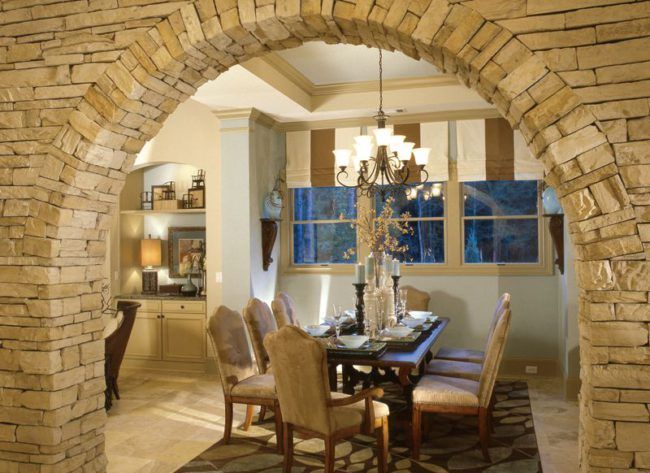
Arrangement of an arch is one of the ways to add expressiveness to a living room.
4. The edges of the cut element are sanded with a file on the stone.
5. The tiles are ready to install, but don’t rush. Each element must be inspected for the presence of cement laitance on the back of it. This thin foamy layer will impair adhesion and the stone will quickly fall off. If this layer has been found, it can be removed with a metal brush. The increased air temperature in the room can become an obstacle to the quality adhesion of surfaces. This problem can be solved by wetting the back of the plates with water.
Decorating with decorative stone is painstaking work, but the result is worth it
6. The glue mass is evenly applied both to the wall itself and to the back of each element, but its layer should not exceed 10 mm, otherwise the stone will constantly slide, disrupting the whole order.
Grouting is carried out only after the structure has completely dried (after about two days). For this procedure, a special syringe is used, which is filled with a joint solution. With gentle movements, without unnecessary pressure on the stone, the solution is smoothed out. For these purposes, use a rubber spatula or brush. The tile surface can be cleaned with a sponge and a soft cloth. You can save the coating from abrasions by applying acrylic varnish on it..

